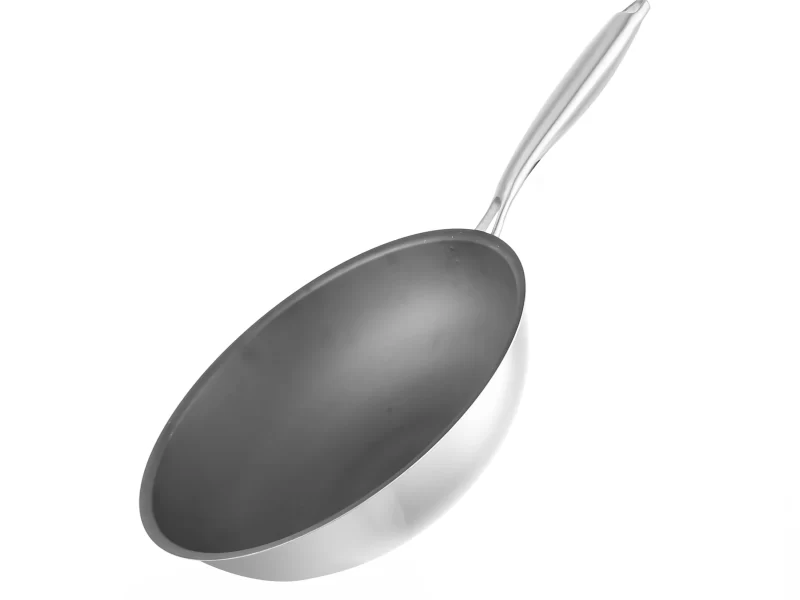
Titanium metal, a high-tech material known as the “space metal,” has long been used in space rockets, deep-sea submarines, and human implants, and is now quietly entering the kitchens of ordinary households. But many consumers are still concerned about titanium cookware safety.
In this article, Hengguang, a titanium cookware manufacturer, will combine scientific evidence with practical knowledge to uncover the truth behind titanium cookware for you.
What is Titanium Mental
Before delving into titanium cookware, let’s first understand titanium from the material itself:
Basic characteristics of titanium
Chemical symbol and properties: Titanium (Ti) is a chemical element, a silver-gray transition metal, with an atomic number of 22.
Main advantages:
- Lightweight: The density is about 4.5g/cm³, which is only 60% of steel.
- High strength: The strength is close to steel, even higher than some alloy steels, but lighter in weight.
- Corrosion resistance: A dense oxide film (TiO ₂) naturally forms on the surface, which can resist acid, alkali corrosion, and salt spray erosion.
- High-temperature stability: The oxide film is stable below 600 ℃ and has better high-temperature resistance than aluminum and stainless steel.
- Biocompatibility: It does not produce a rejection reaction with the human body and is a commonly used material for medical implants.
Two mainstream categories
Titanium materials can generally be divided into two categories: commercially pure titanium and titanium alloys.
Industrial pure titanium is divided into Grades 1 to 4 according to purity and strength, with Grade 1 having the highest purity and the best flexibility, and Grade 4 having higher strength. This type of titanium is widely used in medical implants, kitchenware, and high-end daily necessities due to its corrosion resistance and high biocompatibility. It is the main material for most “pure titanium” water bottles, tableware, and soup pots in the market.
Titanium alloys add trace elements such as aluminum, vanadium, molybdenum, etc. on the basis of titanium to enhance strength, high temperature resistance, and processing performance. The commonly used Grade 5 (Ti-6Al-4V) is a representative material in the aerospace field and has gradually been introduced into professional cookware and industrial equipment. Compared to pure titanium, titanium alloys are easier to form, lower in cost, and have higher strength, making them suitable for products that require durability and structural complexity.
Overall, pure titanium is suitable for kitchen utensils that pursue lightweight and health safety, while titanium alloy brings stronger practicality and cost-effectiveness while ensuring safety.
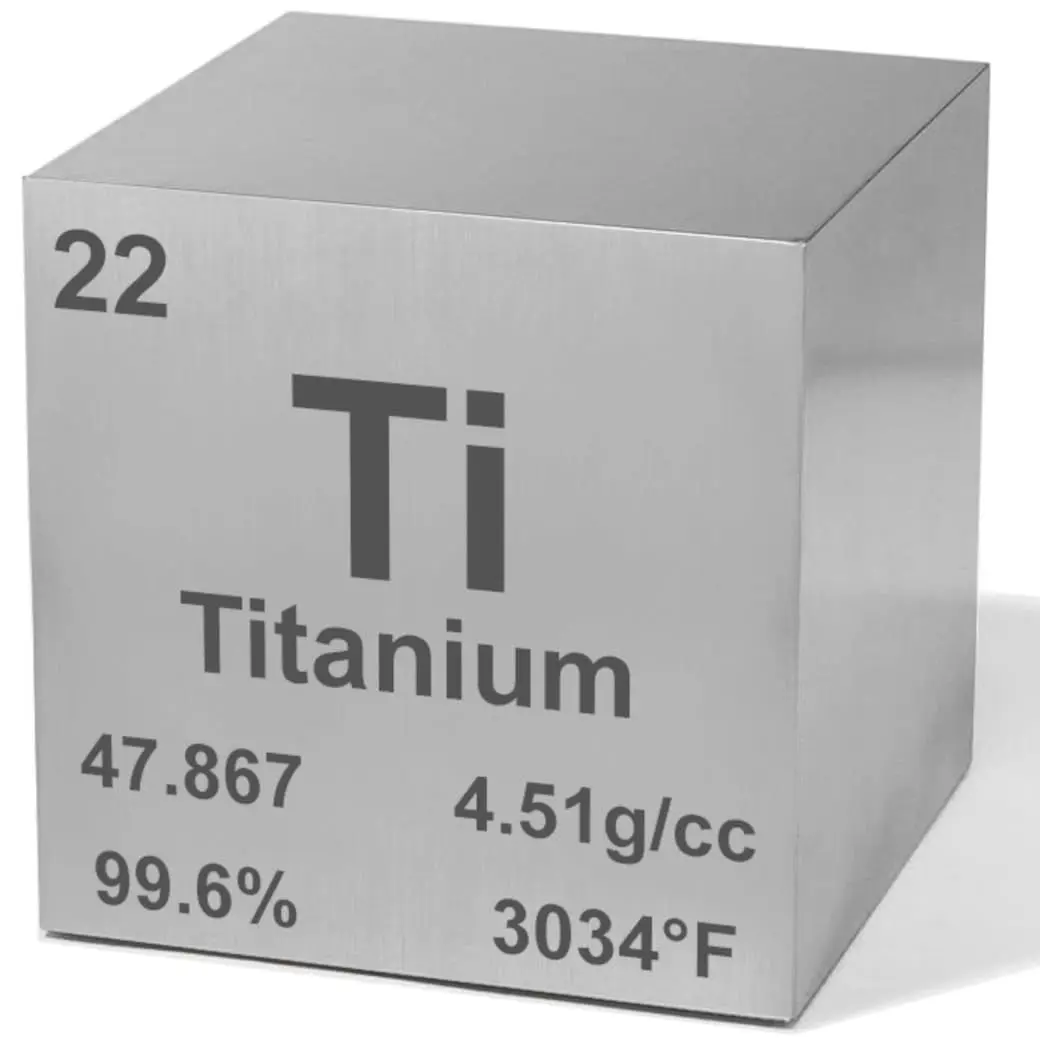
The Safety of Titanium: From Human Implants to the “Bio Metal” of Dining Tables
Titanium is known as the ‘biological metal’, and this title is by no means an empty one.
In the medical field, titanium is the preferred material for long-term implants such as artificial joints, dental implants, and heart stents. Research shows:
- Titanium has excellent biocompatibility and almost no chemical reaction with the human body.
- Titanium ions are extremely difficult to migrate in the body and do not affect the nervous system or taste buds.
It is one of the few metals that can coexist with the human body for a long time.
Titanium can also form a dense titanium dioxide film (TiO ₂) in the air, with a thickness of only 5-20 nanometers, which is sufficient to resist the erosion of strong acids, alkalis, and even aqua regia.
Even if the surface is scratched, this protective film can self-repair, so there is no need to worry about metal precipitation when cooking acidic and alkaline ingredients (such as tomatoes, lemons, vinegar) in titanium pots, which is far superior to aluminum pots or inferior stainless steel pots.
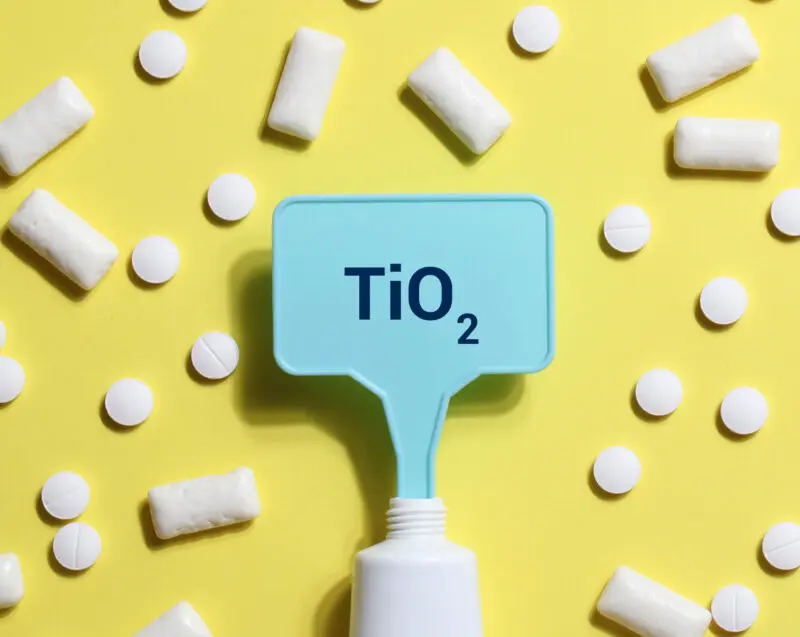
Titanium Cookware Safety Analysis
Titanium cookware is not a single category, but can be divided into three categories based on material composition and process technology: pure titanium cookware, titanium alloy cookware, and titanium-coated cookware. Different types of safety, durability, and cooking experience vary, which will be analyzed one by one below.
Pure Titanium Cookware
Features:
- Material: Industrial pure titanium (Grade 1-4), with a titanium content typically ≥ 99.5%.
- Structure: Most of them are single-layer metal structures, formed by stamping, stretching or CNC machining.
- Weight: Extremely light, about 60-70% of the weight of stainless steel cookware of the same size.
- Corrosion resistance: protected by a natural passivated oxide film, it does not rust or be corroded by acid or alkali.
Security analysis:
- High chemical inertness: Pure titanium is extremely stable at room temperature and daily cooking temperatures, does not release metal ions, and is harmless to the human body.
- High temperature stability: The titanium oxide film will not fail within 600 ℃, and it is safe for daily cooking (usually ≤ 250 ℃).
- Biocompatibility: Medical implant-grade materials directly demonstrate the non-toxicity and human compatibility of titanium.
User’s experience:
- Lightweight and portable, suitable for outdoor camping and lightweight kitchen scenes.
- Low thermal conductivity, uneven heating during cooking, requiring slow fire or precise temperature control using an induction cooker;
- High price, more positioned as high-end or professional outdoor equipment.
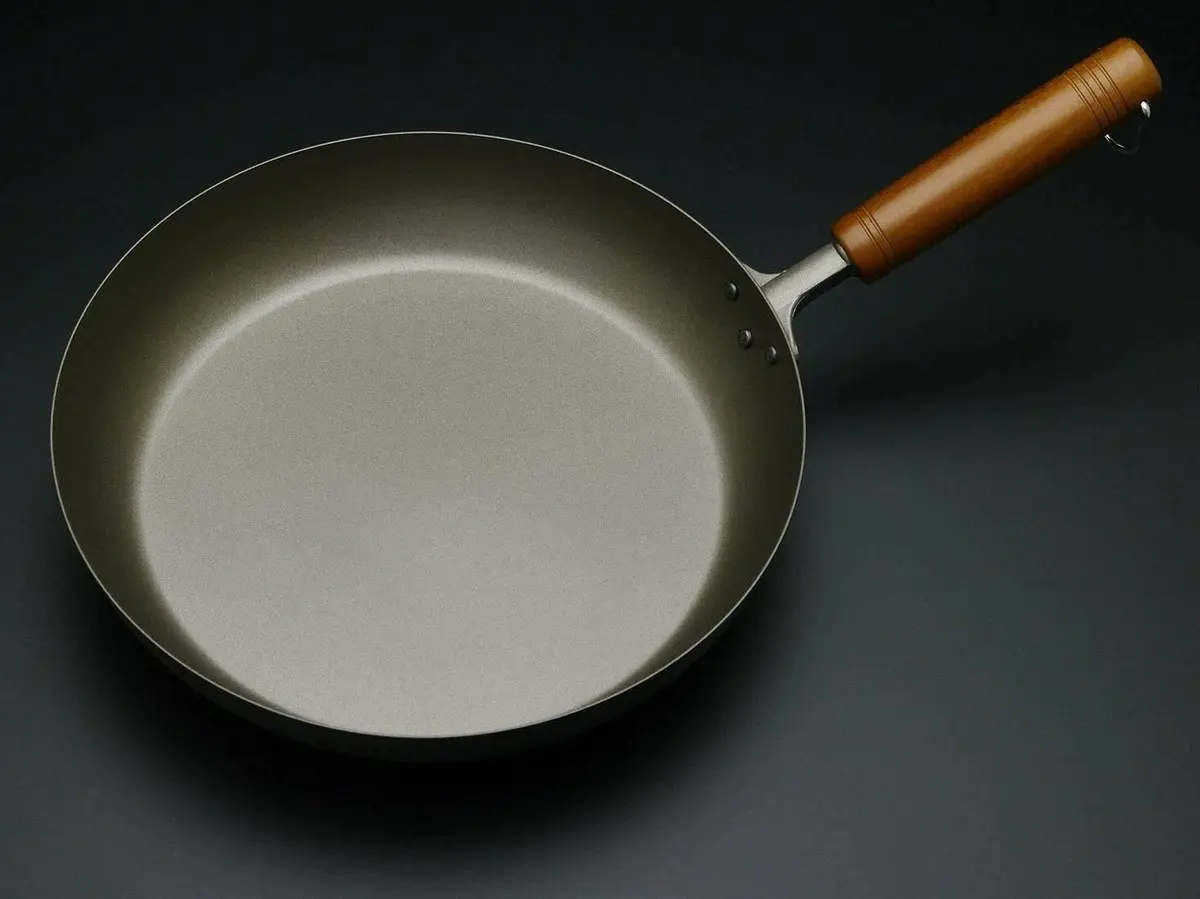
Titanium Alloy Cookware
Features:
- Alloy type: Food-grade titanium alloys are mostly composed of titanium combined with trace elements such as aluminum, molybdenum, and vanadium, commonly Grade 5 (Ti-6Al-4V).
- Design concept: Improve strength, heat resistance, and processability through alloying, while reducing manufacturing costs.
- Process: High-temperature forging or multi-layer metal composite bottom structure.
Security analysis:
- Controllable alloy composition: Food-grade titanium alloy strictly controls the proportion of alloy elements, complies with FDA and GB standards, and will not release harmful substances during cooking.
- Corrosion protection advantage: The alloy still has the self-passivation characteristics of titanium and is resistant to acid and alkali.
- Strict regulation: Alloy cookware must pass contact material migration tests (such as EN 1186, GB 4806.9), and products in circulation in the market are generally safe and reliable.
User’s experience:
- Compared to pure titanium, it is easier to form and can achieve more complex designs, such as multi-layer bottom pots and thickened pot walls.
- Higher intensity, more suitable for daily high-frequency cooking;
- The price is slightly lower than pure titanium, but still in the mid to high-end range.
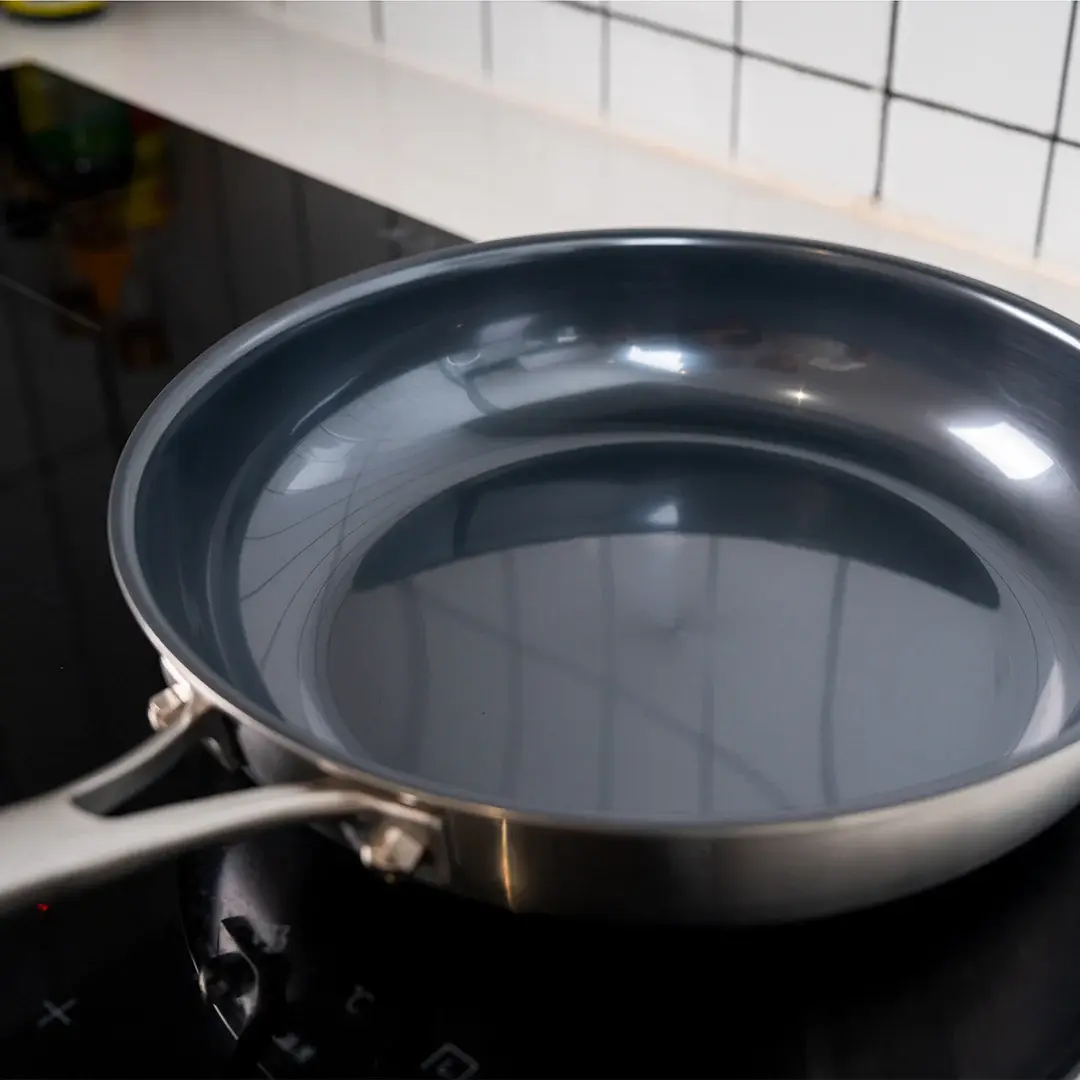
Titanium Coated Cookware
Features:
Process principle: Spray or ion coat titanium (PVD technology) on the surface of the pot to form a very thin layer of titanium metal or titanium compound coating.
Diverse substrates: usually stainless steel or aluminum alloy as the main material, with additional titanium coating.
Visual effect: The surface presents a unique metallic luster and has scratch-resistant and wear-resistant properties.
Security analysis:
- Food contact safety: PVD titanium coating is a physical coating and does not contain chemical binders.
- High wear resistance: Compared to ordinary non-stick pan coatings, it is scratch-resistant and wear-resistant, and will not easily fall off.
- Potential risk: If the process is not up to standard or long-term strong friction causes the coating to peel off, exposing the substrate may affect the experience, but it does not affect safety.
User’s experience:
- The thermal conductivity depends on the substrate (metal pot body), and the cooking performance is closer to traditional cookware.
- Fashionable appearance is a common choice in the mid to high-end non-stick pan market.
- Safety is closely related to brand craftsmanship, and it is necessary to choose a certified brand.
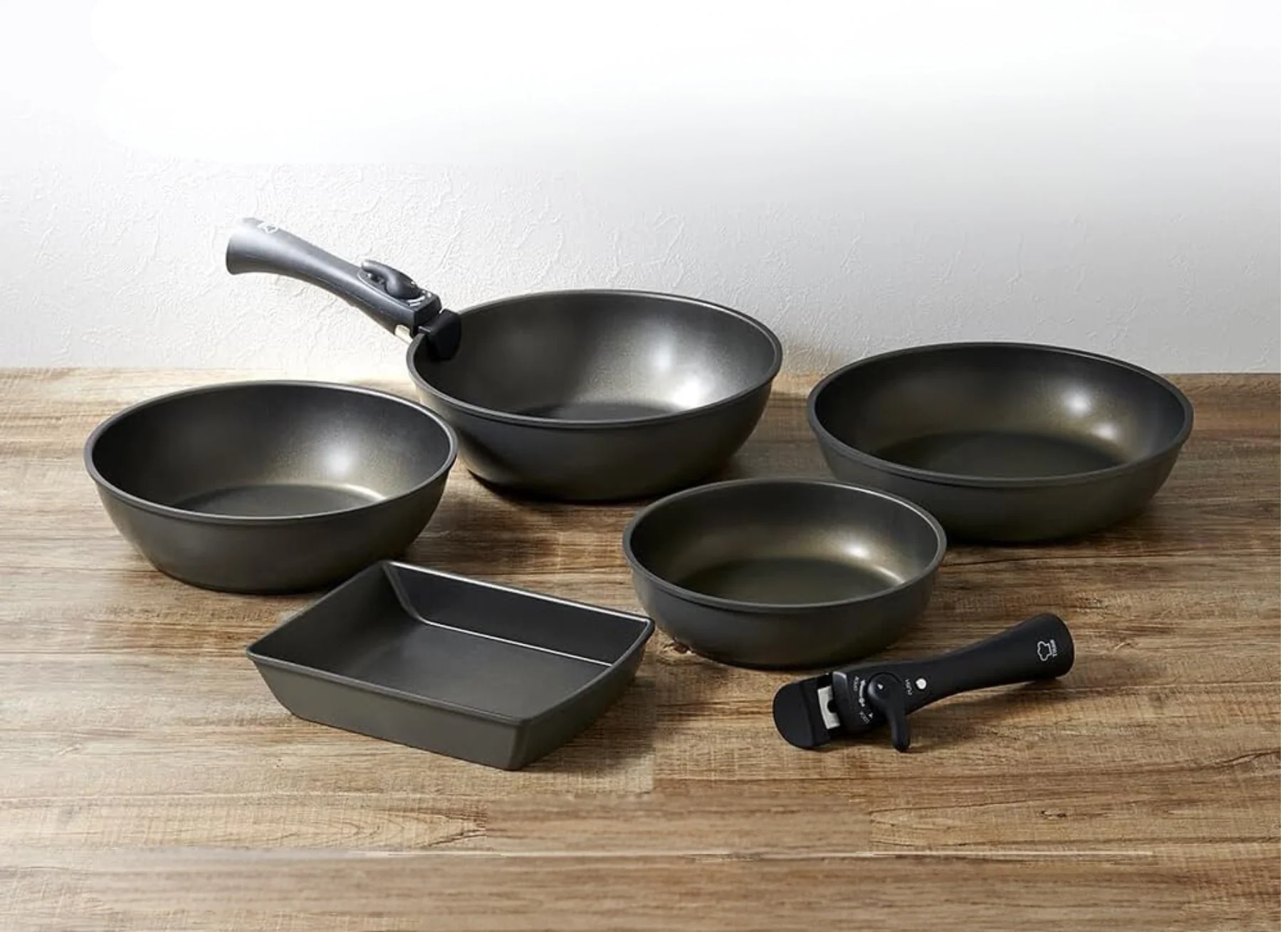
Summary
| Type | Material Composition | Safety Rating | Corrosion Resistance | Thermal Conductivity | Weight | Positioning |
|---|---|---|---|---|---|---|
| Pure Titanium Cookware | ≥99.5% Pure Titanium | ★★★★★ (Very High) | Excellent | Poor | Ultra-light | Premium / Outdoor Gear |
| Titanium Alloy Cookware | Titanium + Trace Alloy Elements | ★★★★★ (High) | Excellent | Good | Light | High-end Home / Professional Cookware |
| Titanium-coated Cookware | Stainless Steel/Aluminum + Titanium Coating | ★★★★☆ (Mid-High) | Very Good | Excellent | Moderate | Mid-to-High-end Non-stick Cookware |
The Advantages of Titanium Cookware: Not Just Safety
The advantage of titanium pots lies not only in their “harmlessness”, but also in their ultimate performance:
Natural antibacterial activity:
The oxide film on the surface of titanium can stimulate the “photocatalytic effect” under light irradiation, effectively decomposing organic matter, with an inhibition rate of over 99% against common pathogenic bacteria such as Escherichia coli.
High-temperature stability:
The melting point of titanium is as high as 1668 ℃, and there is no risk of precipitation at daily cooking temperatures (≤ 250 ℃). Even if burned to 600 ℃, it will not release toxic substances; In contrast, PTFE coatings may decompose harmful substances at 260 ℃.
Lightweight and durable:
The density of titanium is only 57% of stainless steel, but its strength is 3.5 times that of it. The weight of a frying pan of the same size can be reduced by more than 50%, making it portable, drop-resistant, and durable.
Non-stick experience without chemical coating:
By hammering or laser engraving to form micrometer-scale fish scale patterns, combined with an oil film to achieve physical non-stick properties, the problem of chemical coating aging and peeling is avoided.
Safe Usage Guide: Avoid Mistakes for A Longer Period of Time
Despite the outstanding performance of titanium pots, attention should still be paid to:
Avoid prolonged air burning: Air burning for more than 10 minutes may damage the middle aluminum layer.
Control the fire temperature: Medium to low fire is sufficient to achieve the desired effect and avoid local overheating.
Be cautious with steel wire balls: Hard cleaning tools are prone to scratching the surface, and although they can self-repair, they affect the appearance.
There are no taboos for acidic foods: You can safely cook acidic ingredients such as lemons and tomatoes.
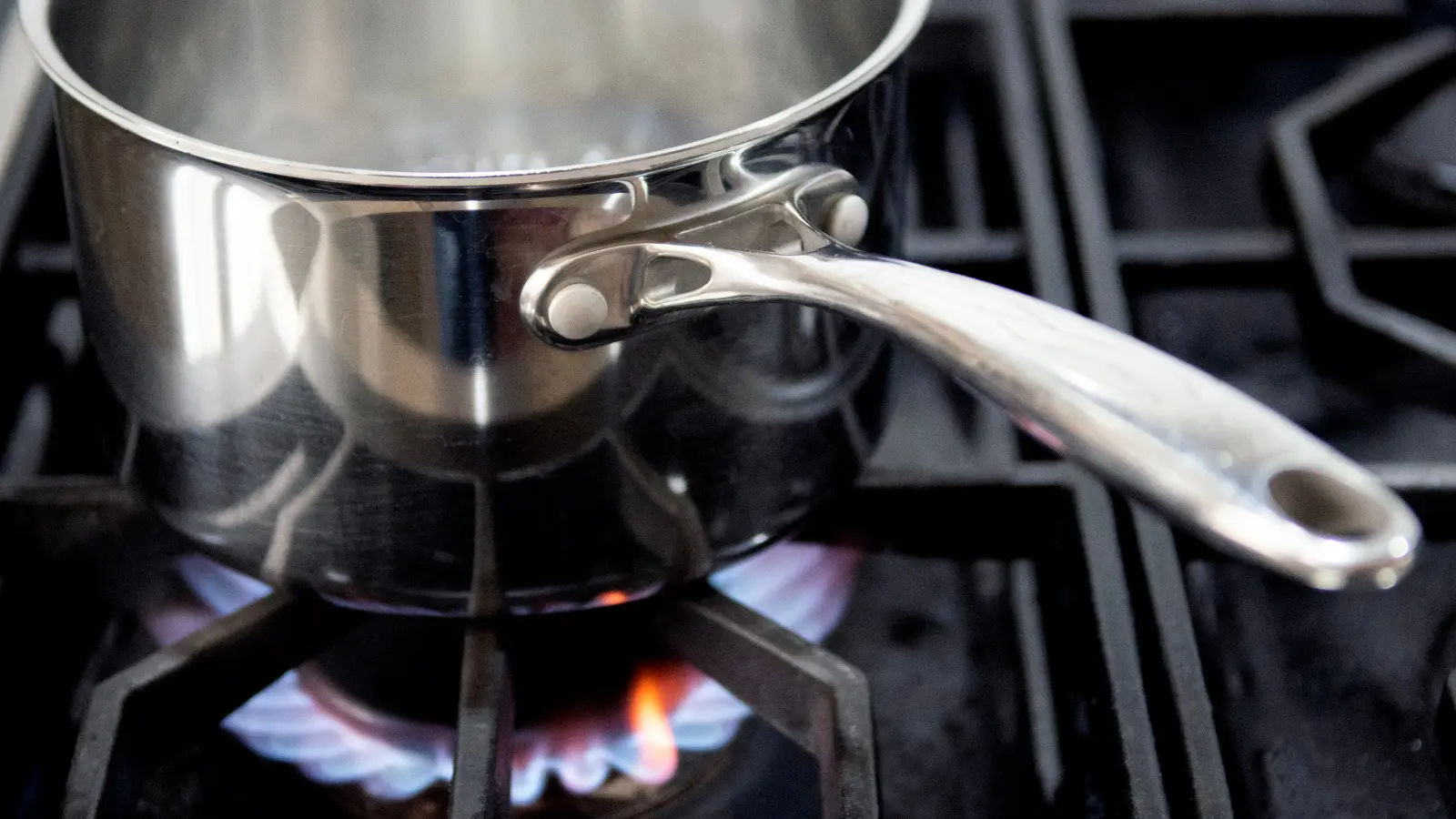
Conclusion
Titanium cookware is a worthwhile investment in health. The safety of titanium cookware has been validated for decades in the field of medical implants, and now entering the kitchen is essentially a “dimensionality reduction application”.
Although titanium pots are priced higher than ordinary cookware, they:
- Lifetime durability without replacement.
- Health properties without chemical coating dependence.
- Lightweight and antibacterial properties.
All of these make it an ideal choice for families that value quality of life and health.
About Us

Hengguang is a top titanium cookware manufacturer, specializing in premium, lightweight, and durable cookware designed for both professional chefs and everyday kitchens. Our titanium cookware is built to deliver exceptional performance while ensuring long-lasting quality and safety for every meal.
We provide custom titanium cookware solutions, offering OEM and ODM services that allow brands and distributors to create unique, market-driven products. From innovative designs to advanced manufacturing techniques, Hengguang delivers cookware that meets the highest international standards.